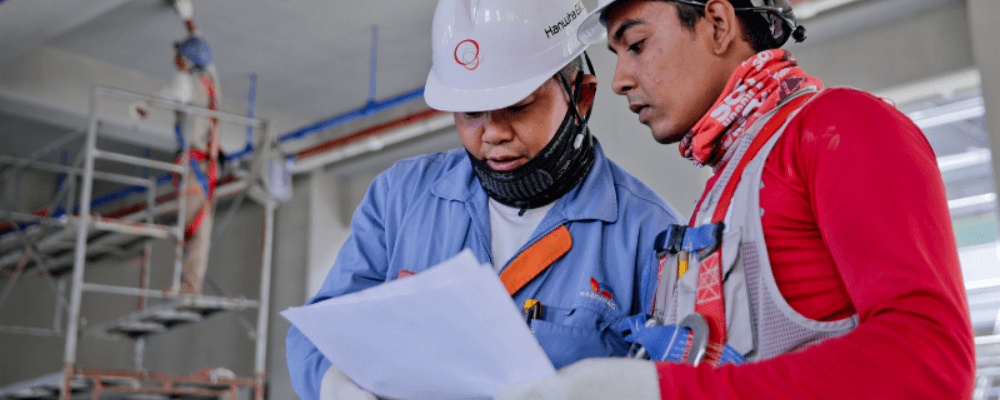The construction industry is no stranger to paperwork. It’s an essential part of the job, but it can be tedious and time-consuming if you don’t have the right tools for streamlining construction documents. By incorporating best practices and using the latest technology, you can save time, improve accuracy, and boost productivity on the jobsite. In this post, we’ll explore the different tools available for streamlining construction documentation, as well as how to use them to your advantage. We’ll also discuss the benefits and pitfalls of current methods, to help you make an informed decision about which approach is best for your business.
The Importance of Streamlining Construction Documentation
Documentation is a crucial component of every project. It is how teams track and manage everything from schedules and budgets to materials and safety protocols. However, with so many documents to create and manage, it can quickly become a headache that eats up valuable time and resources.
That’s where streamlining construction documentation comes in. By simplifying the process, teams can work more efficiently and effectively, ultimately improving productivity and reducing costs. Streamlining can also improve communication, as everyone has access to the same documents in real-time.
Without streamlined processes, construction projects can suffer from delays, errors, and budget overruns. Manual paperwork processes can also increase the likelihood of human error, leading to costly mistakes.
Streamlining construction paperwork is essential for the success of any project. By implementing best practices and utilizing technology, teams can stay organized, reduce errors, and stay on schedule.
Why Pen and Paper Doesn’t Cut It for Construction Documents
While construction paperwork is an essential part of any project, it can often become a time-consuming and cumbersome process. Many construction companies still rely on traditional methods such as pen and paper or outdated software, which can lead to several common pitfalls, such as:
- Errors and inaccuracies: With paper-based systems, it’s easy for documents to get lost, damaged, or even misplaced. This can lead to delays in project timelines and potential legal issues. Additionally, manually filling out forms and documents increases the chances of human error, such as missing information or incorrect data entry.
- Lack of accessibility and collaboration: Traditional methods make it difficult for multiple team members to access and update documents in real-time. This can result in miscommunication, duplication of efforts, and delays in decision-making. It also makes it challenging to track the progress of paperwork, leading to confusion and potential delays in project completion.
- Lack integration and automation: Without the use of technology, construction companies must manually transfer data between different systems, such as project management software, accounting software, and document management systems. This can be a time-consuming process that increases the chances of errors and duplications.
- Lack of transparency and accountability: Without proper documentation and record-keeping, it’s challenging to track the history and status of paperwork. This can result in disputes, misunderstandings, and potential legal issues down the line.
On the Jobsite: Construction Document Best Practices
Efficient documentation is essential to a successful construction project. The following best practices can help keep projects running smoothly:
- Use standardized forms – Using the same forms consistently can save time and reduce confusion. Ensure all necessary information is included on the form before beginning work. This is one place using construction management software can come in handy, as you can ensure there is only ever one version of a form available to be used – and that it’s the most up to date and relevant version.
- Document everything – Recording details of every aspect of the project can save time and money in the long run. This documentation should include changes to plans, deliveries, materials, and equipment used on the site.
- Stay organized – A cluttered worksite can lead to lost documents, so keep everything organized and stored in a designated area. This can be done through digital means like cloud storage or physical methods like folders or binders.
- Establish communication protocols – Regular communication among workers, supervisors, and contractors is critical. Establishing communication protocols, like daily check-ins and weekly meetings, can help keep everyone informed and ensure nothing falls through the cracks.
- Use mobile technology – Mobile devices can streamline paperwork by allowing workers to quickly and easily submit reports, punch in, and provide supervisors with updates.
By following these best practices, you can improve productivity, reduce errors, and ensure your project is completed on time and within budget. Incorporating technology into these practices can further streamline the paperwork process, freeing up more time for workers to focus on other important tasks.
Utilizing Technology for Construction Documents
Construction paperwork can be overwhelming and time-consuming, especially when you’re dealing with multiple projects. However, thanks to technology, construction managers can now digitize paperwork and simplify processes. There are a variety of tools and software available that can help to streamline the documentation process and keep everything organized.
One of the most popular tools is construction document management software. These solutions are designed to make it easier to manage and track all aspects of a project, including documentation. By using document management software, construction managers can centralize all the paperwork, track progress, manage change orders, and much more. With everything in one place, the documentation process becomes much simpler and efficient.
Using technology like construction document management software can help you with some of the best practices listed in the section above, including:
- Digital construction forms: Digitizing all of your forms means that you can make certain fields mandatory, so all necessary information HAS to be filled in before submission.
- Digital signatures: Reduce paperwork by replacing the need for a handwritten signature on important documents. With digital signatures, a document can be signed electronically, and a timestamp can be added for accuracy. Digital signatures are secure, traceable, and easy to use, making them an essential tool for streamlining construction documentation.
- Digital binders: Digitizing your important documents is a great solution, as there’s nowhere safer or more organized than the cloud. Employees can access the information they need from anywhere, making it easier to remain compliant.
- Project Management: Having instant access to records and dashboards can help project managers keep their fingers on the pulse and react to any issues quickly if they should arise.
- Time Tracking: Getting rid of paper timesheets protects owners from time theft and workers from wage theft. It also reduces payroll time and costs by eliminating manual entry, lost paper, and human error.
Benefits of Digitizing Construction Documentation
As with any industry, time is money in construction. Time spent filling out and processing paperwork can result in a significant decrease in productivity, and ultimately, profit. However, by going digital with their construction documents, companies can reap a multitude of benefits, such as:
- Time savings: By using technology like project management apps, documentation can be streamlined and processed quickly and efficiently. This leaves workers more time to focus on actual construction work and project management, ultimately resulting in increased productivity.
- Better organization: When all documentation is stored and processed in one place, it’s easy to find and reference information as needed. This can be especially useful in situations where contractors need to refer back to specific documents or orders.
- Cost savings: By minimizing errors and redundancy, companies can avoid costly mistakes that result from paperwork errors, which can save time and money in the long run. Additionally, by having documentation stored digitally, it eliminates the need for paper storage and physical document management, which can reduce costs related to physical storage space and document destruction.
- Better communication and collaboration: With documentation stored and accessible in one location, it becomes easier to share information and updates with all necessary parties. This ultimately leads to improved collaboration between contractors, architects, project managers, and owners, as everyone has access to the same information.
The Bottom Line, to Protect Your Bottom Line
The era of the pen and paper is over, thanks to its tendency toward errors and inaccuracies, lack of accessibility and collaboration, the absence of integration and automation, and a lack of transparency and accountability. Construction companies should consider adopting technology tools such as project management apps and document management software. These tools can streamline the documentation process, improve efficiency, and reduce the risks associated with manual methods. By embracing technology, construction companies can save time, increase productivity, and enhance the overall success of their projects.


